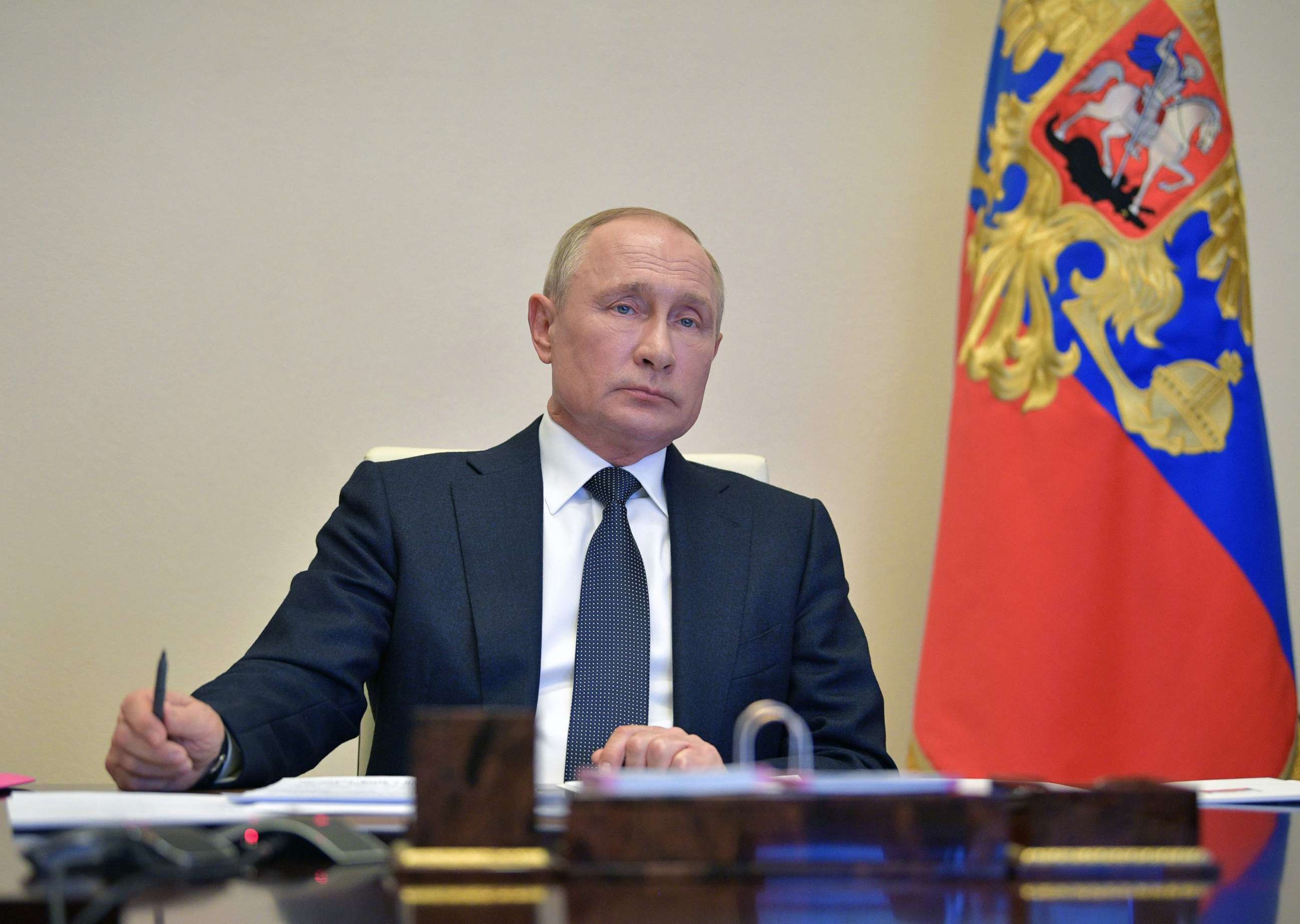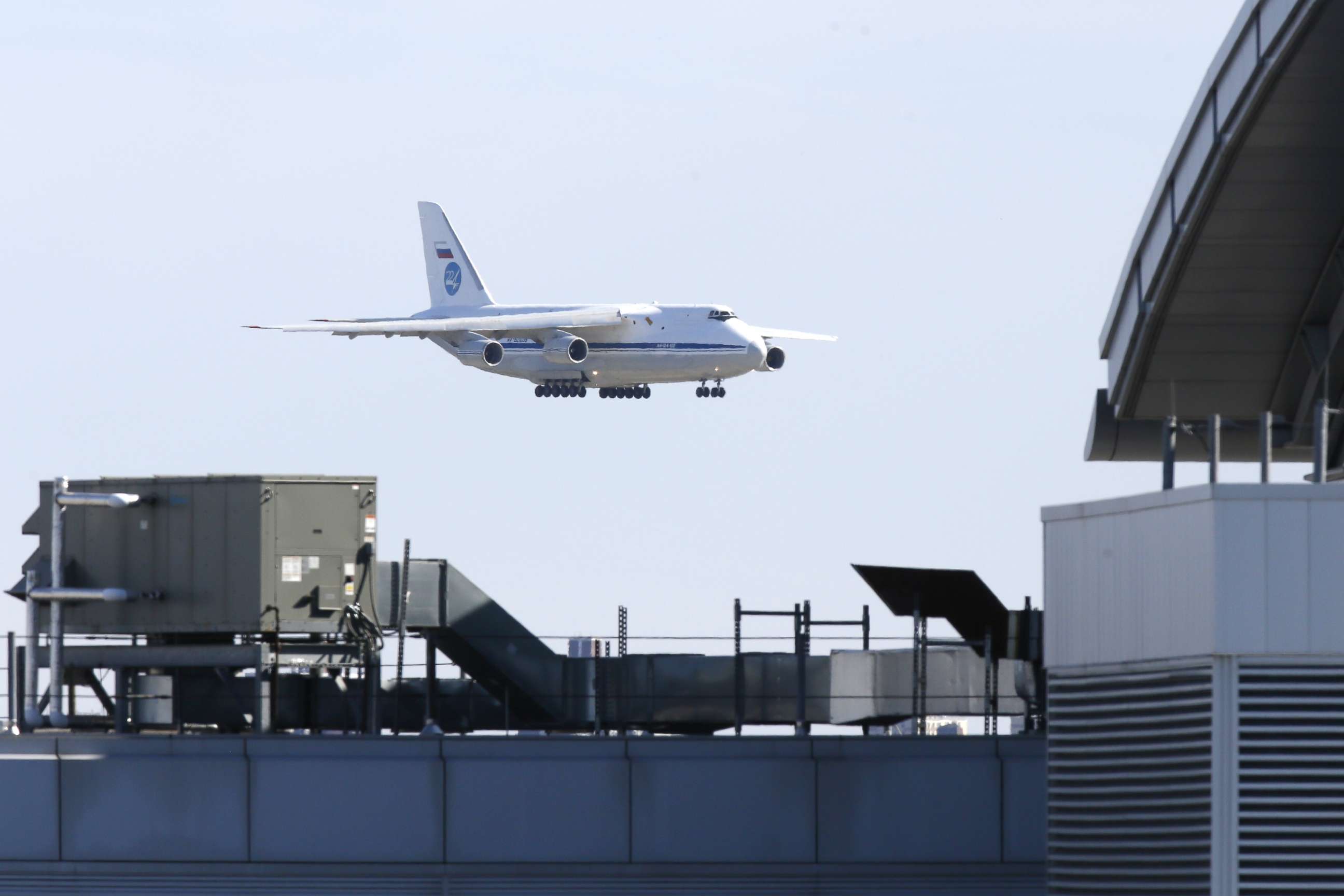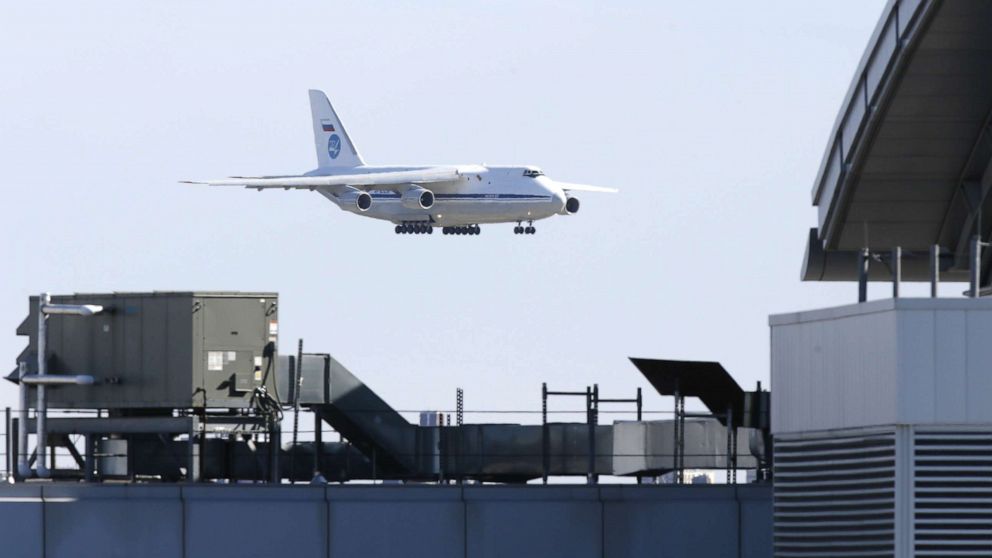Russia bills US $660K for aid that included gas masks, household cleaning gloves
Russia billed the U.S. nearly $660,000 for its medical aid flight last month that included thousands of pieces of equipment not typically used by hospitals, including chemical warfare-style gas masks and household cleaning gloves, according to a government record of the shipment.
The cargo also included 45 ventilators that were not immediately useable because of voltage-related issues, according to two U.S. officials.
It was not immediately clear how useful the April 1 shipment to New York City’s John F. Kennedy airport has been for nearby hospitals. The federal government said it transferred the supplies to New York and New Jersey state officials, who did not immediately respond to questions about whether the cargo was provided to health care workers or remains in storage.
Thousands of respirators, surgical gloves, medical clothing and antiseptic packets were also included in the flight.
Still, the details and price tag of the shipment, which have not been previously reported, challenge public descriptions by the Kremlin and President Donald Trump and raise questions about whether the shipment served primarily as a public relations coup for Russia, known by U.S. intelligence for waging disinformation campaigns.
“I’m not concerned about Russian propaganda. Not even a little bit,” Trump told reporters during an April 2 press briefing.

Trump said the cargo was offered by Russian President Vladimir Putin in a private phone call.
“He offered a lot of medical, high quality stuff that I accepted and that may save a lot of lives. I’ll take it every day,” Trump said.
Moscow referred to the flight in its state-run media as “humanitarian aid” that New Yorkers would be grateful to receive. Russia’s foreign ministry said the Kremlin was covering the cost of half the value of the cargo with the other half being covered by the United States.
“In New York, there really is a tough situation, it seems to me, every make, every piece of protective gear counts, and so it’s hard to overstate the importance of this aid,” said Dmitry Polyansky told Russian reporters after meeting the plane at JFK airport, according to the state news agency TASS.
“It’s a good gesture of solidarity with New Yorkers. They appreciate it,” he said.
Trump agreed.
“It was a very nice gesture on behalf of President Putin and I could have said ‘no thank you’ or I could have said ‘thank you’ and it was a large plane of very high-quality medical supplies, and I said ‘I’ll take it,’” Trump told reporters April 2.
Foreign policy experts though have questioned the move by Trump, saying it was a propaganda coup for the Kremlin as it continues to try to undercut U.S. interests.

According to Russia’s foreign ministry, the money for the supplies came from the Russian Direct Investment Fund – Russia’s sovereign wealth fund that was sanctioned by Treasury in June 2015 as part of sanctions punishing Russia for its annexation of Crimea from Ukraine.
Also, at least some of the ventilators were made by a Siberian factory that is owned by a Russian state company sanctioned by the U.S. over Russia’s invasion of Ukraine in 2014.
The State Department did not respond to a request for comment about the utility of the cargo. On the question of sanctions, a senior administration official said the sanctions on the Russian Direct Investment Fund don’t apply to medical equipment and supplies.
A record of the supplies was provided to ABC News by the Federal Emergency Management Agency, which is coordinating the federal response to coronavirus.
According to FEMA, the supplies included a total of 4,000 M-95 “full face masks with filters,” which are military-grade masks used to protect against chemical and biological agents. The mask needed by U.S. health care workers and other frontline responders is the “N95” respirator, which does not cover a person’s entire face.
The agency said the flight also included 15,000 respirators, some 80,000 packs of skin antiseptic, 30,000 surgical gloves and about 400,000 pieces of medical clothing.
Questions to FEMA about the utility of the 45 ventilators were referred to the New York and New Jersey health departments. U.S. equipment requires 110 volts, whereas Russia relies on 220-volt electricity.
At the time of the flight, New York Gov. Andrew Cuomo said he feared the state could face a ventilator shortage and complained the federal government wasn’t doing enough to ensure ventilators would go to the areas that need them most.
“It’s like being on eBay with 50 other states bidding on a ventilator,” Cuomo said on March 31.
Trump dismissed Cuomo’s claim and said the federal government had already supplied New York with the equipment. The president has since repeatedly referred to the U.S. as the “king of ventilators,” and fears of a ventilator shortage in New York City have subsided somewhat as cases plateaued.
“The State Department received a final invoice from the Government of Russia for $659,283,” a FEMA spokesperson told ABC News. “Once the routing instructions are received, the State Department will remit payment and FEMA will reimburse the State Department.”
The president did not disclose the price tag in his April 2 press briefing. When asked if he would take more supplies from Russia, Trump said yes.
“If they send things that we need, I’d take it. Sure,” he said.
ABC producers Patrick Reevell, Josh Margolin and Ben Gittleson contributed to this report.




